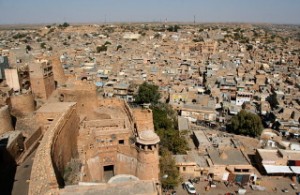How Tourism is Helping Economic Development
Traveling to quaint and unique places has always been my passion. As an avid traveler myself, I enjoy experiencing different cultures and places. Now, while I love thinking of myself as the only person who actually indulges in some adventure travel, the reality of the situation is that there are millions of people in this world who love traveling. But what is more interesting is that they love traveling to the same places I do. Ranging from the slums of Delhi to the outskirts of Peru, people love traveling to developing nations because each is so different than the other. The tourism industry is booming in these nations, and their governments are looking to reap these benefits for the betterment of their country.
Jaisalmer. This is a small desert town in the north west of India on the border of the Thar Desert. Yellow sandstone huts are sprawled all over the town, surrounding an ancient Indian fort that takes up the entire centre of the town. With a population of only about 78,000 Jaisalmer is considered one of the smaller towns in India. But the sandstone huts and yellow wave of roofs is what attracts this rudimentary town to tourists. Because of the large number of tourists that flock to Jaisalmer each year, you now have leather shops, hotels, camel tours and a host of other occupations and businesses. This is how tourism is one method to assist in economic development. Jaisalmer – a town that practically had no industries – now attracts foreigners from all over the globe and generates a good amount of revenue to improve the standard of living amongst the people. For areas that can attract foreign tourism revenue it can be a high economic driver, especially if other industries are unable to support the local economy.
ancient Indian fort that takes up the entire centre of the town. With a population of only about 78,000 Jaisalmer is considered one of the smaller towns in India. But the sandstone huts and yellow wave of roofs is what attracts this rudimentary town to tourists. Because of the large number of tourists that flock to Jaisalmer each year, you now have leather shops, hotels, camel tours and a host of other occupations and businesses. This is how tourism is one method to assist in economic development. Jaisalmer – a town that practically had no industries – now attracts foreigners from all over the globe and generates a good amount of revenue to improve the standard of living amongst the people. For areas that can attract foreign tourism revenue it can be a high economic driver, especially if other industries are unable to support the local economy.
The World Tourism Organization – the UN agency for tourism – argues that tourism can play a major role in eradicating poverty and meeting the millennium development goals. People love experiencing different cultures, that’s why so many people from the West flock to the developing nations where the culture is so different. They spend their strong currencies and in turn the local areas receive a higher economic return.
Take Rio de Janeiro for example. Every year when it hosts its annual carnival, there is a huge rise in tourism. The sharp spike in tourism plays a huge part in the country’s overall economic strategy. By providing jobs for the local people, it reduces unemployment, contributes to the GDP and helps in eradicate poverty. The governments of these developing nations are spending more and more money on marketing their countries to tourists after realizing the economic benefits of one of the world’s largest industries.
Udit Hinduja is a student at New York University double majoring in Economics and Political Science. As a Program and Research intern with the SISGI Group his focus areas are education, poverty and economic development in Asia and South America.

